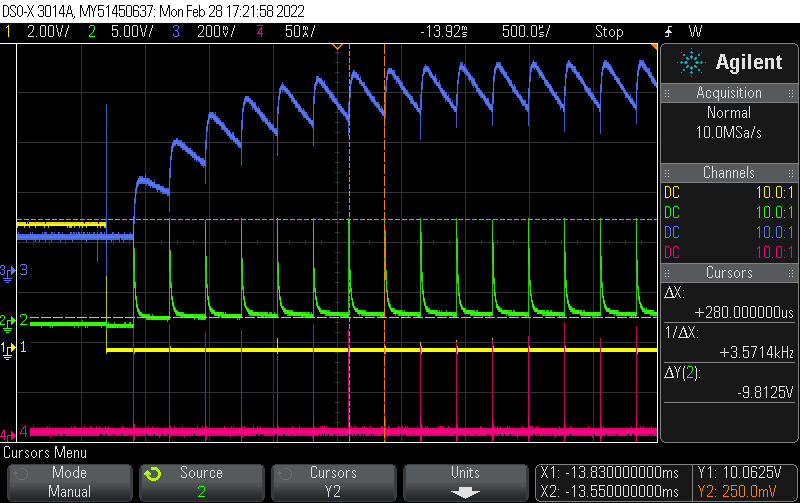Hi,
I'm using the LM3409EVAL and am not getting the results that I am expecting. I wanted to test the possiblity driving the shunt FET externally as specified in the datasheet, and modified the circuit in this manner (roughly)
The simulation provides an off-time of about 300ns, but on the eval board it goes into maximum off-time (300us). Is there anything I'm missing in this setup?
Roff1(R2) and Roff2(R14) were calculated according to the datasheet, the rest is similar to the eval board.


